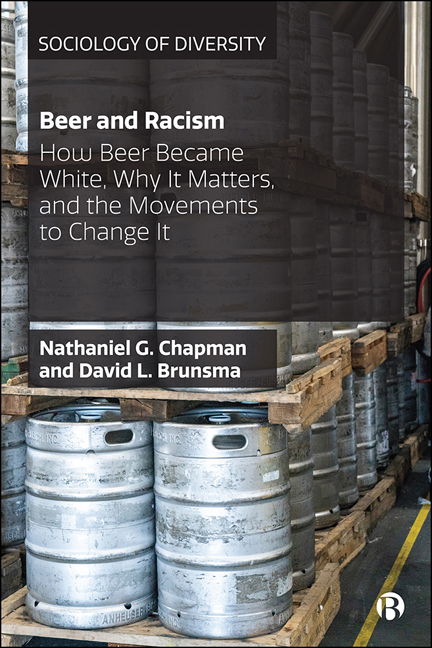Book contents
- Frontmatter
- Dedication
- Contents
- About the Authors
- Acknowledgments
- Foreword
- Series Editor Preface
- 1 Brewing Up Race
- 2 Racism, Brewing, and Drinking in US History
- 3 The Making of the (White) Craft Beer Industry
- 4 The Paths to Becoming a Craft Brewer and Craft Beer Consumer
- 5 Exposure, Marketing, and Access: Malt Liquor and the Racialization of Taste
- 6 Gentrification and the Making of Craft Beer White Spaces
- 7 #WeAreCraftBeer: Contemporary Movements to Change the Whiteness of Craft Beer
- Appendix A Respondents to the Semi-Structured Interviews
- Appendix B Interview Protocol
- References
- Index
6 - Gentrification and the Making of Craft Beer White Spaces
Published online by Cambridge University Press: 25 February 2021
- Frontmatter
- Dedication
- Contents
- About the Authors
- Acknowledgments
- Foreword
- Series Editor Preface
- 1 Brewing Up Race
- 2 Racism, Brewing, and Drinking in US History
- 3 The Making of the (White) Craft Beer Industry
- 4 The Paths to Becoming a Craft Brewer and Craft Beer Consumer
- 5 Exposure, Marketing, and Access: Malt Liquor and the Racialization of Taste
- 6 Gentrification and the Making of Craft Beer White Spaces
- 7 #WeAreCraftBeer: Contemporary Movements to Change the Whiteness of Craft Beer
- Appendix A Respondents to the Semi-Structured Interviews
- Appendix B Interview Protocol
- References
- Index
Summary
Introduction
A central question motivating this book is: ‘Why do black people not drink craft beer?’ When you visit a brewery, or a beer festival, why are there so few black people? Simply put, historically excluded black people and other contemporarily racialized and oppressed groups do not go where they do not feel welcome, or represented. Craft beer spaces and places are typically located in gentrified areas (Mathews and Picton, 2014), which, as we argue, have become signifiers of gentrification and middle-class consumption. Further, we argue that craft breweries socially and culturally construct authentic identities that reflect middle-class values. In this chapter, we will explore the ways in which gentrification and craft beer are entangled, and the processes whereby such beer gentrification leads to the creation of ‘white spaces.’ Using interview data, we examine how these spaces discourage and exclude black people and other minorities from participating in craft beer cultures, and therefore its consumption.
Gentrification in three waves
While gentrification does not have a widely agreed-upon definition, it generally refers to ‘the process of middle-class professionals moving to disinvested central city neighborhoods, upgrading housing, and attracting new businesses that cater to the new neighborhood clientele’ (Barajas et al, 2017: 158). This process also ‘coincides with the displacement of current residents and businesses, who tend to be poorer and from racial and ethnic minority groups’ (Barajas et al, 2017: 158). Kirkland (2008: 18) contends that gentrification is ‘often a fundamentally racial transformation: the pre-gentrified neighborhood is inhabited mostly by African Americans or other people of color, and the in-movers are typically white.’ Despite this conceptualization of gentrification, which places race at the forefront, ‘many academic depictions of gentrification … either omit reference to the racial dimensions of the phenomenon, or acknowledge race and ethnicity but forgo examination’ (Kirkland, 2008: 18). Lees (2000: 389) further suggests that ‘black/ ethnic gentrification— race and gentrification’— are ‘wrinkles’ in the literature that deserve further scholarly attention.
According to Smith (2002), gentrification in the US and Europe has occurred across three ‘waves.’ The first wave, which started in the 1950s and ended in the mid-1970s, defined gentrification as a sporadic process in which there is an invasion of working-class neighborhoods by the upper and lower-middle classes (Glass, 1964).
- Type
- Chapter
- Information
- Beer and RacismHow Beer Became White, Why It Matters, and the Movements to Change It, pp. 131 - 154Publisher: Bristol University PressPrint publication year: 2020



